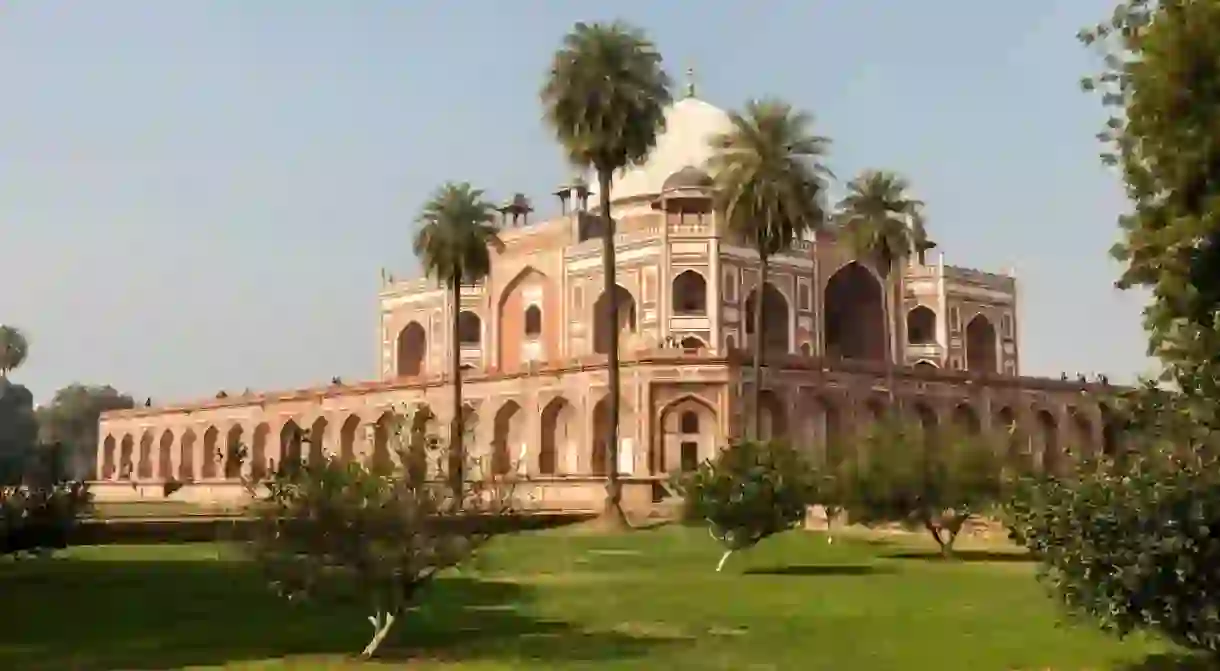Delhi’s Dormitory of the Dead: Humayun's Tomb Complex

Humayun’s Tomb is perhaps Delhi’s most popular monument after the Qutub Minar. The tomb is emblematic of the grandiose style that was Mughal architecture. The monument was one of the first buildings of the iconic Mughal style; a charbagh (garden tomb) in which a garden is laid out in a square divided by four water channels.
Various sources cite different dates for the construction of Humayun’s Tomb. Some say it was built after the Mughal emperor Humayun’s death in 1556 by his senior widow, Haji Begum, but if we go by the Archaeological Survey of India and Unesco’s findings, the construction began in 1569.
For history buffs, Humayun is known for being the second Mughal emperor to rule over the northern reaches of the country, starting his reign in 1531. Though the Mughals were actually of the Chagatai Khanate (descended from the second son of Gengis Khan), their love and patronage of Persian art and architecture overshadowed their origins.
Inspired by the Persian style of architecture, it’s commonly believed that Humayun himself planned the design of the tomb, although historical evidence points to the Persian architect Mirak Mirza Ghiyath as the mastermind behind this architectural gem. Spread over an area of 21ha (52 acres), visitors are mostly drawn to the main mausoleum but a few know that the complex has much more to offer.
Situated at Mathura Road, the location was chosen for its proximity to the dargah (shrine) of Sufi saint Nizamuddin Auliya. It’s no wonder that the complex is called the dormitory of the Mughals; more than 150 Mughal tombs can be found here, as it was considered sacred to be buried near the tomb of a saint.
As you enter Humayun’s Tomb complex, the first monument that you come across is the tomb of Isa Khan Niazi. This structure predates that of the Mughals. An important noble at the court of Emperor Sher Shah Suri, his tomb is octagonal in shape – typical of the Sur architecture.
Mystery lurks over other prominent structures, especially the one known as the Barber’s Tomb. A square tomb with a double dome, it has not been ascertained who’s buried here. Other monuments of interest include the Nila Gumbad, a structure which is wrongly confused with the Sabz Burj located outside the complex at the junction of Mathura Road and Lodhi Road. While the former is believed to have been built in 1625 by Abdur Rahim Khan to enclose the remains of his servant Fahim Khan, the latter is most probably a pre-Mughal structure.
Two legends dominate the story behind the Arab Sarai, a large enclosure in the complex. Some say it was built by Haji Begum as a residential complex for the 300 Arab priests that she had brought over from Mecca, while others say it was actually the residence of the Arab craftsmen who were engaged in the construction of the tomb. Another mystery is the garden of Bu Halima whose origin is also unknown. It is believed that an unidentified woman is buried here.
Humayan’s tomb complex can rightly be called a living monument which has witnessed several phases of Indian history. It served as the haven of the last Mughal emperor during the revolt of 1857 before he was exiled to Burma, and sheltered thousands of refugees during the partition violence.













